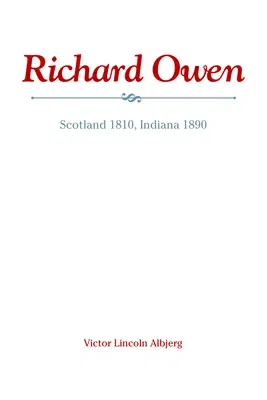Richard Dale Owen was born in 1810 in Scotland to a wealthy textile
manufacturer and philanthropist. The youngest of eight children, Richard
grew up at the family estate of Braxfield House, where he received his
early education from private tutors. He would later go on to study
chemistry, physics, and natural sciences, among other subjects,
traveling between Scotland and Switzerland for his schooling.
Owen arrived in the United States in 1828 to teach in New Haven,
Indiana, where his father was running an experimental utopian community
of happiness, enlightenment, and prosperity. He would later go on to be
Indiana's second state geologist before enlisting in the army during
both the Mexican-American War and the American Civil War. Colonel Owen
took command of 4,000 Confederate prisoners at Camp Morton in
Indianapolis, where he established new daily routines and rules for
supervision of the prisoners. Under Owen's command, prisoners were
allowed to read books and form glee clubs, theatrical groups, and sports
teams. He also created a camp bakery staffed by prisoners that proved to
be a substantial cost savings, allowing for above-average rations for
the prisoners under his watch.
After his military service came to an end, Owen continued to serve as a
state geologist as well as becoming a professor at Indiana University,
teaching chemistry, language, and natural philosophy. After failing to
help secure IU as Indiana's land-grant school, Owen was recruited to
help establish Purdue University, west of Lafayette. The board of
trustees selected him to serve as the University's first president on
August 13, 1872. However, Owen and the trustees disagreed on many early
initiatives, including his focus on agriculture and push for more
comfortable living arrangements for students.
After less than two years serving as president, where he never drew a
salary, Owen resigned his position and returned to teaching at Indiana
University, until hearing problems caused him to retire in 1879. He
spent his remaining years in New Harmony, where he conducted research
and published several scientific papers until his tragic death caused by
an accidental poisoning at the hand of a local pharmacist.


